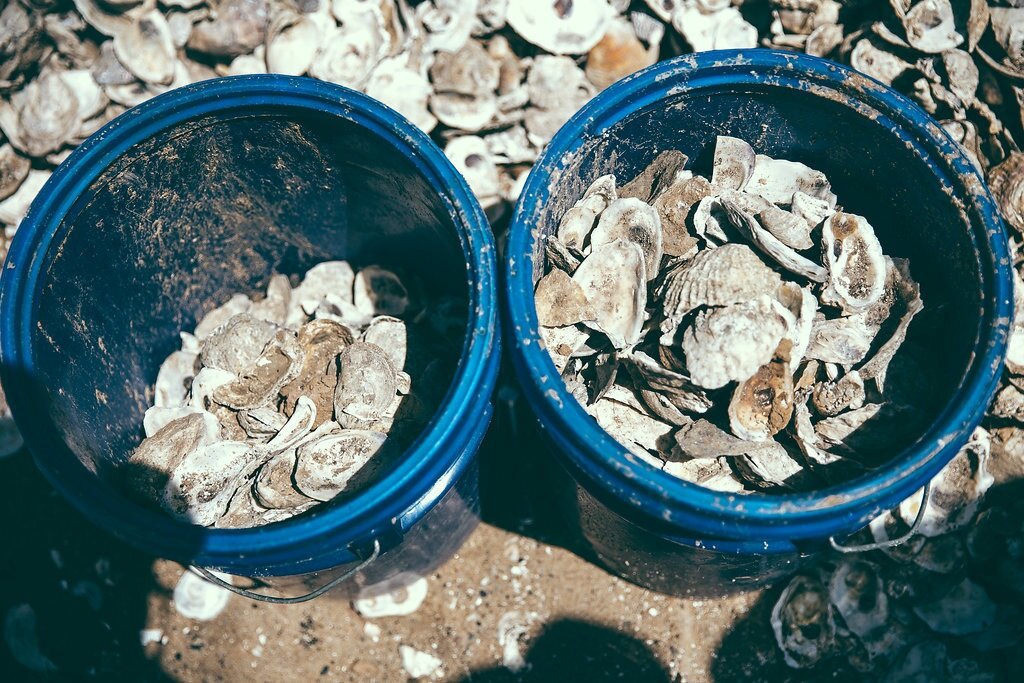
Why Oysters?
Oysters are Ecosystem Engineers.
Oyster Reefs Foster Biodiversity
Like coral reefs, oyster reefs provide 3D habitat for hundreds of species. Oysters grow off of one another — creating a hardy infrastructure for a lively underwater city of marine wildlife. Reefs are to the ocean what trees are to the forest.
Oysters Filter Water
Oysters filter water as they eat, which helps clarify the water and remove certain pollutants, including nitrogen. This is very important to a marine ecosystem, because excessive nitrogen triggers algal blooms that deplete the water of oxygen and create “dead zones.”
Oysters Reefs are a Natural Storm Barrier
Massive oyster reef systems in New York Harbor were once a natural defense against storm damage—softening the blow of large waves, reducing flooding, and preventing erosion.
Oyster shell is a key component in restoration.
Oyster shells are a home for young oysters.
Young oysters — or spat — must settle on a hard surface to survive. Oyster, clam, and scallop shells provide that hard surface and are rich in calcium carbonate — making them the perfect substrate for oysters to settle on for oyster restoration projects across New York State.
Oyster shells are collected locally.
Much of the shell used as substrate for oyster reef restoration in New York State is collected locally from restaurants by our member organizations. Thanks to New Yorkers’ love for oysters, these shells are a plentiful local resource. But chefs purchase oysters from across the United States and Canada - meaning shells come from waterbodies beyond New York.
Proper curing is necessary.
All oyster shells originating from waterbodies outside New York may act as a vector for pathogens and introduce nonnative or invasive species into New York waterways. Curing oyster shell, or leaving shell in the elements for 6 months, eliminates this transfer. Without proper curing, oyster shells introduced to local waterways may cause irreversible impacts to natural resources, the ecosystem, and pathology.


